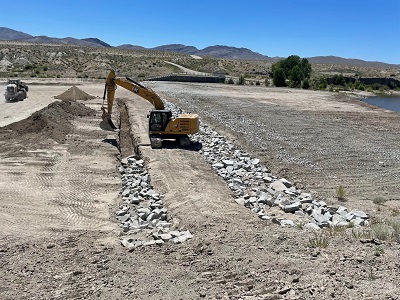Timeline
June 21: Chiricahua Procurement LLC began mobilizing equipment and supplies to the site June 21. On the first day, the contractor delivered 250 tons of ~36" rip rap, staging it by the service spillway.
Photo below: 36 ich rip rap that was delivered in the first load.
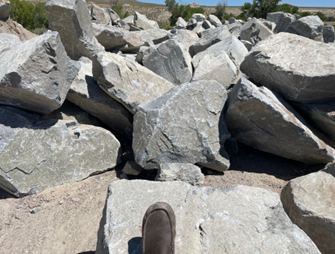
June 22 - Additional rip rap delivered. By day's end, approximately 530 tons of the 600 ton order was on site. A Komatsu Dozer was also brought to the site.
Photo below: Crossing over the fuse plug, it will stage downstream of the fuse plug.
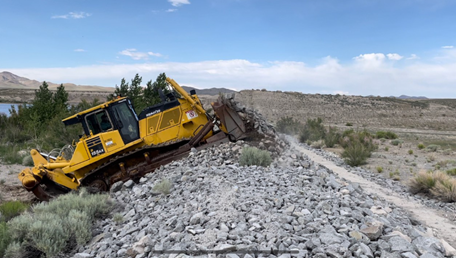
June 23:
- Contractors worked on the removal of the fuse plug. This was done by a Caterpillar 320 excavator that dug a cutoff trench 8 feet deep and 6 feet wide downstream of the fuse plug which rock and soil from the fuse plug was then moved into.
- Placing rip rap into trenches is done to create an engineering feature called an erosion cutoff. These are installed as a safety feature to help slow erosion of the emergency spillway should it become active.
- The remaining rip rap and approximately 60 tons of gravel were delivered to the site.
Photo below: Machinery digging first trench that will be used to place material of the fuse plug into. It is approximately 8 feet deep and 6 feet wide.
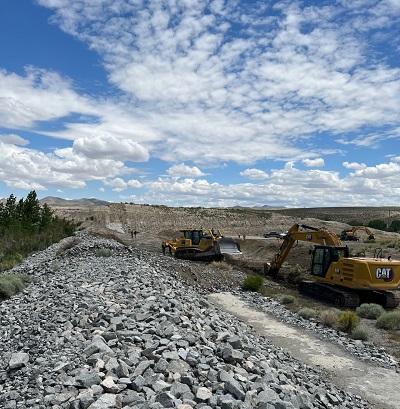
Photo Below: A dozer moves debris from the fuse plug into the trench.
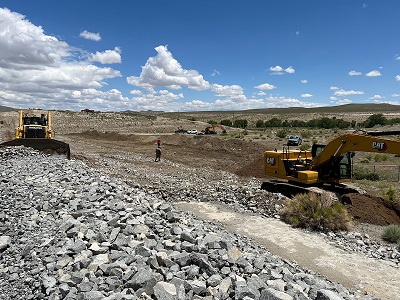
June 24:
- A crane arrived.
- Work necessary to remove the fuse plug continued. This was done by excavating a second trench approximately five feet wide by four feet deep and backfilling it.
- Using soil that was excavated from the trench, an approximate two foot tall berm was created along the fish passage channel to assist with directing water flow away from the fish passage. The contractor then leveled approximately 90% of the fuse plug using the bulldozer.
Photo below: An excavator digs a second trench that was used to place the remainder of the fuse plug material into.
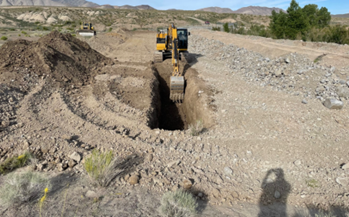
Photo below: Bern approximately two feet tall berm that will assist with directing water flow away from the fish passage.
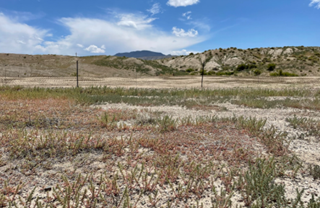
June 25:
- Completed work necessary to remove the fuse plug.
- Proactively removing the fuse plug minimizes downstream flows by half.
- A small drainage channel located along the fence in the service spillway was found and filled. This will help prevent the concentration of erosion near the spillway.
- A Dozer built a level pad near the service spillway where a crane will be prepositioned for use should material need to be placed into spillway chute.
- 50 super sacks with sand spoils from the previous trenching using the excavator was filled and placed near the spillway.
- In total, there will be 100 super sacks prepositioned near the spillway in the event the crane needs to move them quickly into the service spillway.
Photo below: Fuse plug now completely removed.
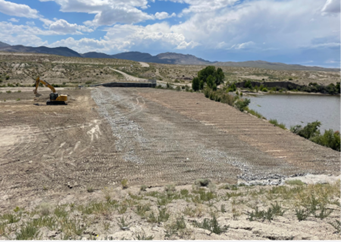
Photo below: Pad near spillway chute where crane will sit on
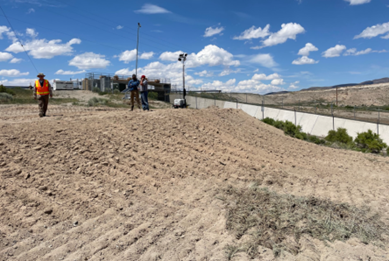
Photo below: 50 super sacks filled with sand staged near service spillway.
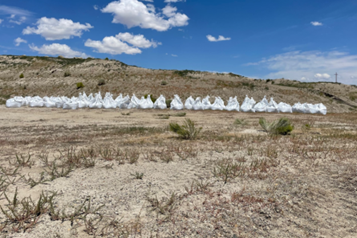
Photo below: Staged equipment and rip rap near service spillway.
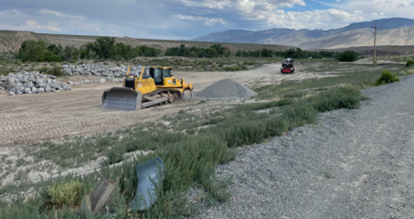
June 26:
- Complete filling the remaining 50 super sacks with sand spoils, transport them to the service spillway for staging.
- Personnel will refuel all machines for staging and perform minor grading in the emergency spillway to smooth the channel of the emergency spillway.
June 30
- Work to construct a 3rd 8’X8’ erosion cutoff trench began. The contractor was able to construct about 1/2 the length of the emergency spillway.
- ~50 tons of riprap was used to fill the new cutoff trench
Photo Below: An ~8x8 foot erosion cutoff trench under construction.
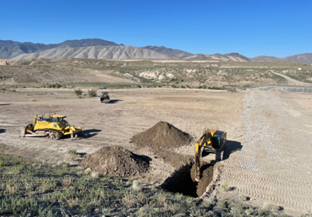
Photo Below: ~50 tons of rip rap was delivered and installed in the 8x8 foot erosion cutoff trench.
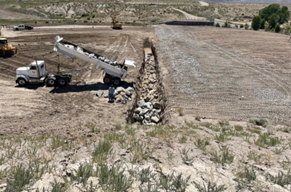
July 1:
- ~150-200 more tons of riprap was delivered and placed into the 3rd erosion cutoff trench. This filled the partial trench slightly more that ¾ full of riprap.
- Equipment improved the berm along the fish channel and further smoothed spoils in the emergency spillway.
Photo Below: July 1 work done to install 3rd erosion cutoff trench in the emergency spillway.
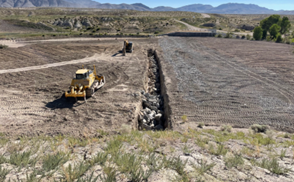
Photo Below: Berm along the fish channel packed and improved.
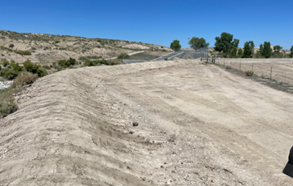
July 3:
- Delivered and installed approximate 260 tons of 36” riprap in the 3rd cutoff trench. In total, the 8’X8 erosion cutoff trench contains approximately 600 tons of riprap.
- The contractor spread sand spoils in the spillway channel
Photo Below: Riprap placed into cutoff July 3
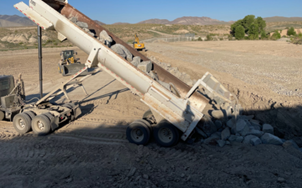
July 5:
- Excavation of the 8'x8' cutoff trench was extended near the fish ladder. Once complete, approximately 250 tons of riprap was placed in. Spoils were added and compacted.
Photo Below: Riprap placement in the extended cutoff trench.
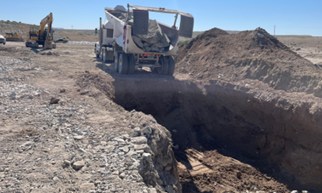
July 12
- Approximately 250 tons of rock riprap delivered
- Completed filling the 8’x8’ cutoff trench with riprap
- Excavated approximately half of the 4’x4’ cutoff trench and filled it with riprap
Photo Below: Placement of riprap in the 4’x4’ cutoff trench next to the completed 8'x8' cutoff trench
